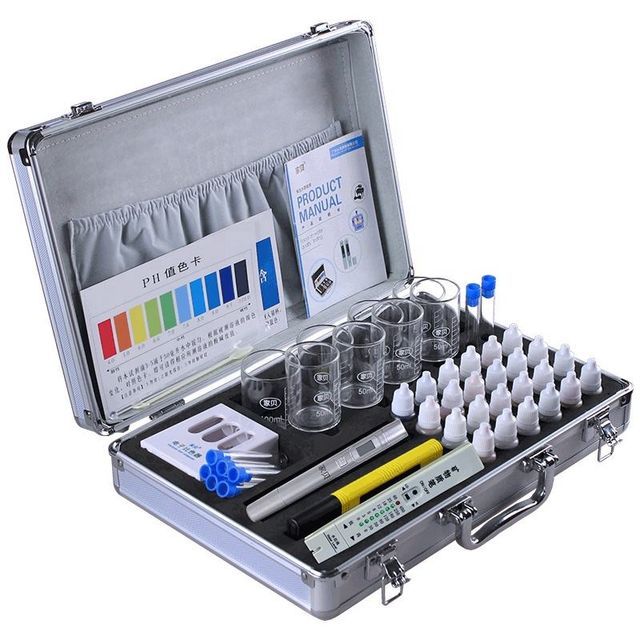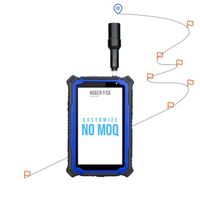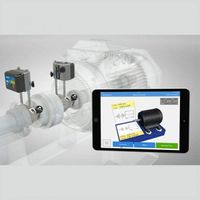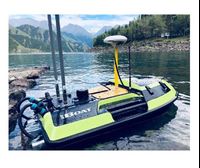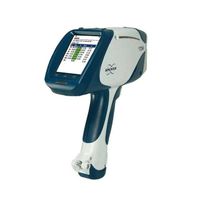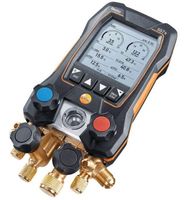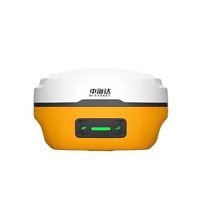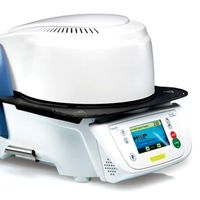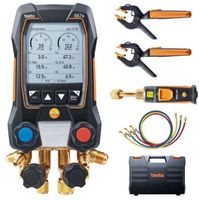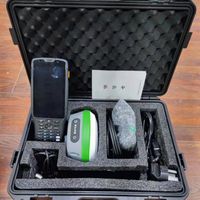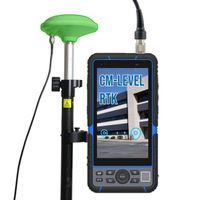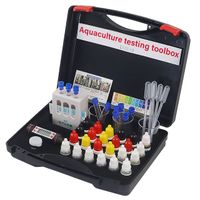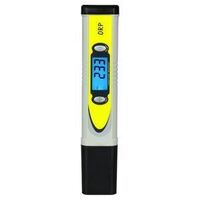New design drinking water and swimming pool water quality analysis kit / water quality analyzer test kit
-
Supplier: Guangzhou Jubway Technology Co., Ltd. -
Region: Guangdong, China -
Contact: Mr Boway Zhu -
Price: $55.00 / 1 - 2 units
$39.00 / 3 - 99 units
$32.50 / >=100 units -
Min. Order: 1 unit
Product details
| Kit material: | Aluminum, ABS, MDF | Test items: | Test water quality (TDS value, mineral content, PH value, etc.) |
| Warranty: | 1 year | advantage: | Safe, durable, good cushioning EVA sponge |
| brand: | Jubway or OEM | application: | Drinking water, aquarium, pool, swimming pool, water purifier |
| port: | Guangzhou, Shenzhen | Origin: | Guangdong, China |
| product name: | Water Quality Testing Kit | Kit Dimensions: | 25*36*8cm |
| Customization support: | OEM、ODM | Supply capacity: | 200 units per month |
| Packaging Details: | Quantity: 1 piece per carton Weight: 2.45 kg Carton size: 40*28*12 cm 20"ft" container: 2083 boxes 40"ft" container: 4315 boxes | Package preview: | |
| payment terms: | Letter of credit, wire transfer, credit card, debit card |
F01 Kit Product List

No. | product name | quantity | Function |
1 | TDS Meter (A50) | 1 item | Detect TDS value |
2 | Electronic Color Comparator (A62) | 1 item | Helps you compare colors in normal lighting, get accurate results and reduce errors |
3 | Mineral meter (A15) | 1 item | For detecting mineral content in water |
4 | PH meter (A21-3) | 1 item | Test the pH of the water |
5 | Chlorine Reagent (B01) | 6 bottles | Chlorine content detection |
6 | PH reagent (B02) | 6 bottles | Check the pH of the water sample |
7 | Phenolphthalein Reagent (B03) | 1 bottle | 8.2-10 Solution PH value detection |
8 | Total Hardness Reagent (B10A) | 1 bottle | For determination of total hardness in water |
9 | Nitrite Reagent (B14) | 2 bottles | Used to detect nitrite content in water quality |
10 | Antioxidant (B07) | 1 bottle | Used to detect whether water has antioxidant function |
11 | Bleach (B12) | 1 bottle | Increase the chloride ion content in the water sample |
12 | Mineral Reagent (B13) | 1 bottle | Test water for minerals |
13 | Phenolic Reagents (B15) | 1 bottle | Used to detect weak acidity and alkalinity of water |
14 | Blue Ink/Industrial Pollution Reagent (B16) | 1 bottle | Check whether the water purifier can filter the pigment |
15 | Heavy metal reagent (B26) | 1 bottle | Detect heavy metals in water samples |
16 | Portlandite Reagent (B05) | 1 bottle | Test whether the water sample contains calcium and magnesium ions |
number 17 | Active water reagent (B28) | 1 bottle | Check if the water sample is active water |
18 | Dissolved oxygen reagent (B08) | 1 set | Dissolved oxygen content detection in water |
No. 19 | Ammonia nitrogen reagent (B09) | 1 set | Determination of total ammonia and amine salt concentration in water samples (calculated as nitrogen) |
20 | Beaker (PC material) | - | Used to hold the water samples to be tested, including 4 100ml beakers and 4 50ml beakers |
twenty one | others | - | Large color card, small dropper, stirring spoon |
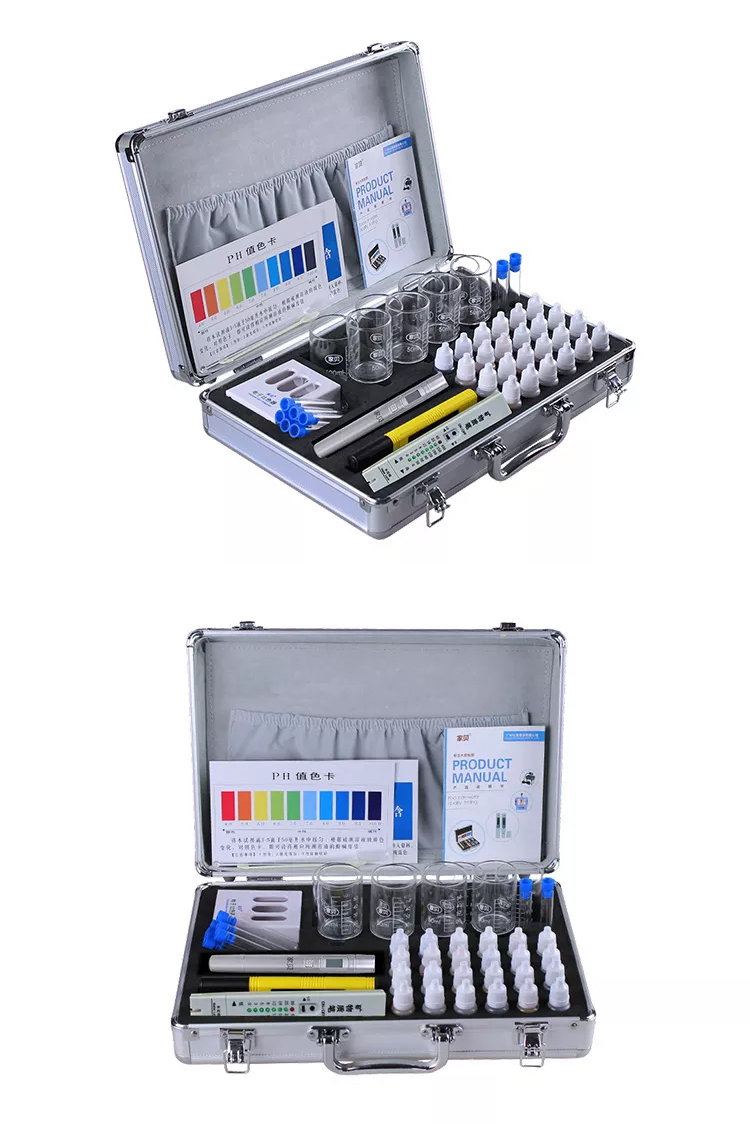
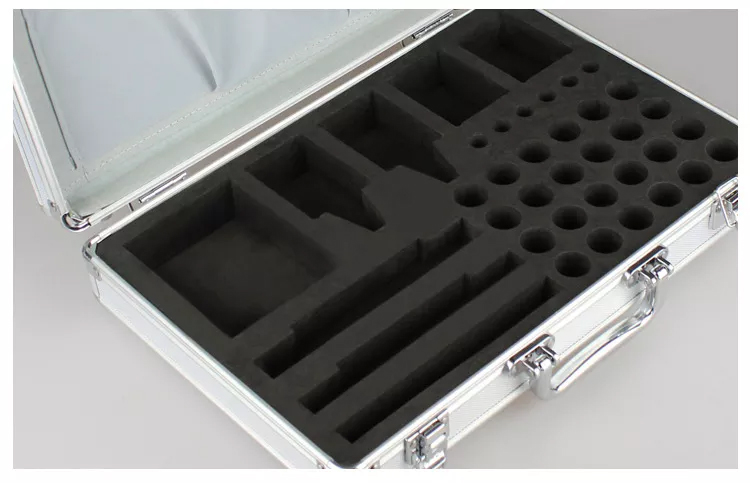
Black high-density sponge, good cushioning effect
F02 Product display and structure details



F03 Product Manual
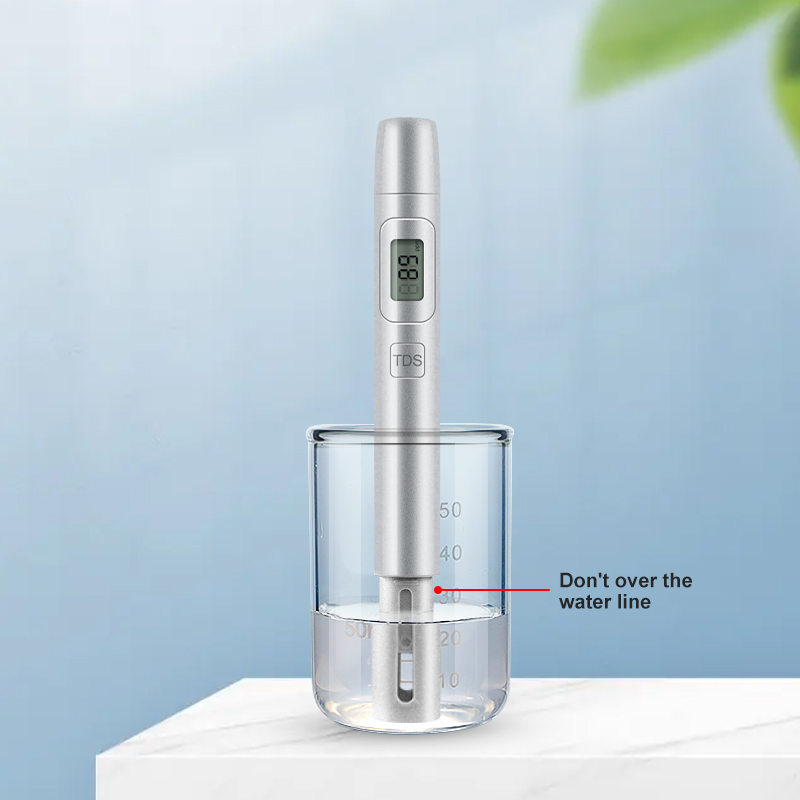
The steps of using the TDS analyzer
Step 1: Press the [TDS] button to turn it on Step 2: Insert the TDS meter into the water Step 3: When the TDS value is stable, you can read the TDS value (ppm)
Due to different production batches, the logo on the tds meter may be different, the actual product received shall prevail
Precautions for TDS Meter
1. After each test, pay attention to clean the probe.
2. Water sample temperature, probe cleanliness, air bubbles, etc. will all affect
Determination of tds.
Determination of tds.
3. The TDS meter cannot test high temperature (for example: boiling water).
Due to different production batches, the logo on the tds meter may be different, the actual product received shall prevail

How to use the Mineral Meter
1. Before testing, press the "ON/OFF" button, if the first light corresponding to "0" is on, it means that the TDS mineral meter is working. 2. Push the "Switch" key to the "LO" side, and the yellow indicator light on one side is lit, and the corresponding maximum reading is the mineral content in the water. If the red indicator light is on, push the "switch" button to the "HI" side, and the maximum reading corresponding to the yellow indicator light on the right is the mineral content in the water. If the red light on the "HI" side is on, it means the mineral content in the water is above 400 ppm.
Precautions for mineral flow meters
Note: During the test, press and hold the "on/off" key until the test is completed.

The steps of using the electronic colorimeter
1. Take the water sample to be tested, immerse in the reagent, stir 2. Put the water sample into the test tube 3. Put the test tube into the colorimeter 4. Turn on the colorimeter switch 5. Insert the corresponding color card into the card slot 6. According to the color of the water sample, compare the color card

How to use the ph meter
1. Press the "ON/OFF" button to turn on the instrument 2. Immerse the electrode of the pH meter into the solution to be tested (cannot exceed the immersion line) 3. When the pH value is stable, you can read the pH value 4. After finishing, wash with pure water electrode, press the "ON/OFF" key to turn off the meter.
Instructions for use of various reagents

Free Chlorine Reagent
Test item: detection of residual chlorine content in water Method of use: 1. Take 30ml water sample 2. Drop 3 or 4 drops of residual chlorine reagent into 20ml water sample and shake well. 3. Compare the water color with the color card to get the residual chlorine value (ppm or mg/L).

PH reagent
Test item: test the PH value of water How to use: 1. Take a 30ml water sample 2. Drop 3 to 4 drops of PH reagent into the water sample and shake well 3. Compare the color of the water with the color chart to get the PH value The measured water value.
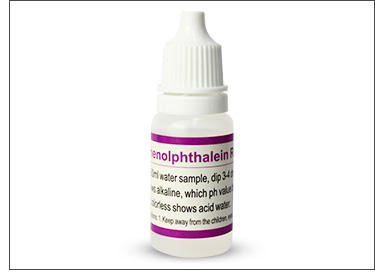
Phenolphthalein reagent
Test item: 8.2-10 Solution PH value test Method: 1. Take 50ml water sample 2. Drop 2-3 drops of reagent into 50ml water sample, shake well 3. The color turns magenta, indicating the pH of the water sample The pH value of the water sample is between 8.2-10, and the colorless indicates that the pH value of the water sample is not between 8.2-10.
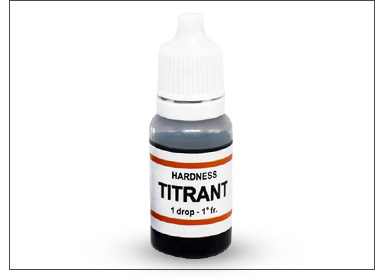
Total Hardness Reagent
Test item: used to determine the total hardness in water. Method of use: 1. Take 5ml of water sample 2. Soak 1 drop, shake well, the water color is red. Then add one more drop and shake well, if the color of the water is still red, add more drops and shake each drop until it changes color. 3. Shake until the water color changes from red to blue, and record the number of drops in the water. Calculation method: 1 drop = 1°fr

Nitrite reagent
Test item: used to test the content of nitrite in water. Method of use: 1. Take 5ml water sample 2. Dip 10 drops of reagent into the water sample, shake well, wait for 5 minutes 3. According to the color of the water sample, it can be measured arrive.
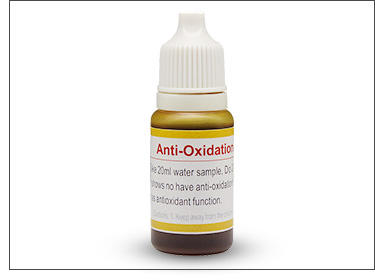
Antioxidant reagent
Test item: used to detect whether the water has anti-oxidation function. Method of use: 1. Take 20ml water sample, soak 2-3 drops of reagent 2. Yellow indicates that the water sample has been oxidized and has no anti-oxidation function 3. Colorless indicates that the water sample has Antioxidant function.

bleach
Test item: increase the chlorine ion content in the water sample Method of use: 1. Take 20ml water sample 2. Dip 2-3 drops of residual chlorine reagent into the water sample and shake well 3. When the residual chlorine reagent cannot detect residual chlorine, it can be used Dip in 1 drop of bleach reagent. The water sample turns yellow, indicating that the residual chlorine reagent is effective.

mineral reagent
Test item: Test whether the water contains mineral content. Method of use: 1. Take 10ml of the water sample to be tested. 2. Dip 1-2 drops of reagent into the water sample and shake well. 3. If the water sample is magenta, it indicates that it contains minerals. substances, it is blue and does not contain minerals.
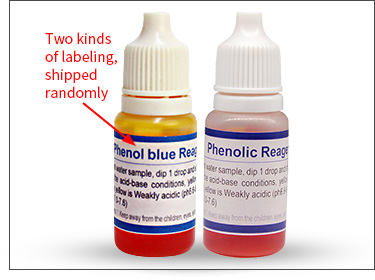
Phenolic/Phenol Blue Reagent
Test item: used to detect weak acid and weak alkalinity of water. Method of use: 1. Take 10ml of the water sample to be tested, 2. Soak 1 drop of reagent in the water sample, shake well 3. If the water color is yellow, it is acidic (pH 6.0 -6.5 value), light yellow is weakly acidic (pH 6.5-6.9), blue is weakly alkaline (pH 7.0-7.9)

Blue Ink/Industrial Pollution Reagent
Test item: Check whether the water purifier can filter the pigment. Method of use: 1. Take a 50ml water sample 2. Dip 5 drops of reagent into the water sample and shake well 3. After being filtered by the water purifier, the color of the water sample changes from blue to blue It is blue to colorless. It shows that the water purifier can filter the pigment.

heavy metal reagent
Test item: Test whether the water sample contains heavy metals. How to use: 1. Take 20ml of water sample 2. Dip 3-5 drops of reagent into the water sample and shake well 3. Red means the water sample contains heavy metals, yellow means it does not contain heavy metals.

Calvinite Reagent
Test item: Test whether the water sample contains calcium and magnesium ions. Method of use: 1. Take 10ml of water sample 2. Dip 1-2 drops of reagent into the water sample and shake well 3. The water sample turns purple, indicating that it contains calcium, magnesium ions Magnesium ions (with a certain hardness), blue means that the water sample does not contain calcium and magnesium ions.

active water reagent
Test item: Check whether the water sample is active water How to use: 1. Take 30ml water sample 2. Dip 5 drops of this reagent and stir for 3-5 seconds 3. If the water sample turns red, it is original ecological water (active water). If the water sample turns yellow, it is non-raw water (non-active water)

Dissolved Oxygen Reagent
Test item: detection of dissolved oxygen content in water Method: 1. Take 10ml water sample, 2. Soak 5 drops of (I) reagent in the water sample, shake well, 3. Soak 5 drops of (II) reagent in the water sample, Shake well. Shake well (wait for 5 minutes), 4. Add 5 drops of reagent (III), shake well until the precipitate dissolves. (If not dissolved, add reagent until dissolved) Count drops. 5. Compare the color of the water sample with the color of the color card. The content of dissolved oxygen can be known.
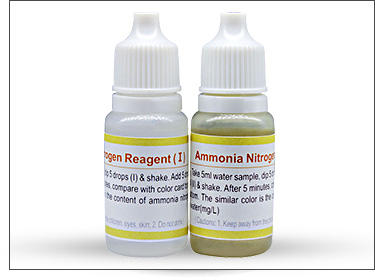
Ammonia nitrogen reagent
Test item: Determination of total ammonia and amine salt concentration in water sample (calculated as nitrogen) Method of use: 1. Take 5ml water sample 2. Soak 5 drops of (I) reagent in the water sample and shake well 3. Soak 5 drops ( II) ) Add the reagent into the water sample, shake well 4. After standing for 5 minutes, visually compare with the standard color card from top to bottom. The color is similar, which is the content of ammonia nitrogen in the water (mg/L)
F04 Wide range of applications

VIEW MORE
You may like
-
HUGEROCK G71M High Performance GNSS Surveying Instrument GPS Drone RTK Industrial Rugged Android Tablet 7 Inch

-
SK F TKSA 51 laser axis alignment system

-
Portable underwater terrain survey won the bid for the price of the unmanned marine vehicle iBoat BS1 unmanned surface vehicle

-
German Bruker Handheld Spectrometer/Handheld Alloy Analyzer S1 TITAN/TRACER 5g

-
Testo 550s Testo 557s Smart Kit with 2 Digital Multimeter Metering Valves

-
Newest Gnss Receiver Measuring Instruments Gps Gnss Hi-Target Vrtk V5 Gnss

-
New Ivoclar Vivadent Programs P710

-
Smart Testo 557s Smart Kit with 2 digital multimeter valves

-
SunNav S26 GPS RTK Other Test Instruments GPS rtk 970 E91 Geographic Equipment S26 RTK GNSS

-
HUGEROCK G60S rugged pda gnss rtk antenna waterproof android ip67 smart 4g industrial security

Other Products
-
 $99.00 / unit
$99.00 / unit -
 $21.90 / unit
$21.90 / unit
Related Search
drinking water dispenser
guangzhou tds meter of drinking water
tds of drinking water in ppm
drink water auto bag make machin suppliers
drinking water treatment machine with best price
drinking water treatment purifying machines
purifier drinking water treatment
drinking water conservation suppliers
drinking water purifier dispenser suppliers
bottles drinking water machine

